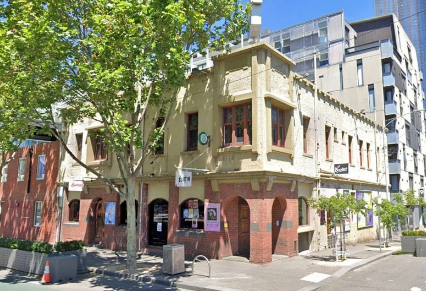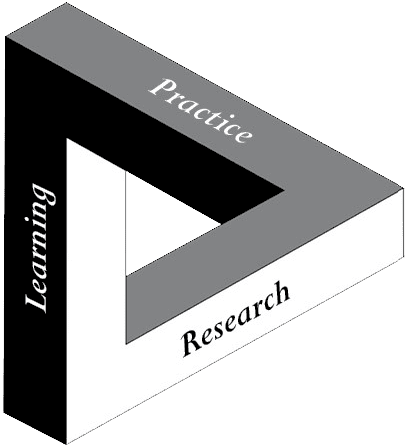The term ‘sense of place’ is so widely used in popular discourse that it has become something of a trope. It is used to sell everything from package holidays to tract housing. However, it is rarely defined, let alone documented or valued as core to human quality of life.
The multiple and accelerating environmental and social challenges delivered by the Anthropocene provides us with a critical opportunity to strengthen revision or rebuilt our relationships with our surrounding environments, both global and local.
By unpacking ‘sense of place’ we have an opportunity to engage people in exploring the importance of distinct yet interrelated concepts such as place attachment, place identity, place dependence and sense of community.
WHO Healthy Cities co-founder, Prof Leonard Duhl, documented in detail the relationship between place and psychological wellbeing in 1999. In line with trends in population health, contemporary place research is embracing dynamic and holistic approaches that look at the big picture.
Locations are understood to have unique qualities in and of themselves. Nevertheless, “location itself is not enough to create a sense of place. It emerges from involvement between people, and between people and place”[i]. Indigenous societies have long nurtured this deeper understanding of place, which western societies are struggling to remember.
Liveability research demonstrates how people’s right to the city — including the right to enjoy good health and wellbeing — is provided by places that offer easy physical access to diverse affordable housing, local employment, social infrastructure, fresh affordable food, green space, walkable neighbourhoods and efficient public transport.
Liveable places welcome us. They make it easy for us to live healthy, meaningful lives; to feel like we belong; and to experience sense of community. As we form relationships with liveable places, so do we help to forge their character, as well as our own sense of individual and collective identity.
By necessity, Liveability research in population health has typically focused on developing quantitative measures that show ‘how much’ of various features of the built environment — both good and bad for our health —are contained in places. Yet our psychological relationships with places are complex, and more challenging to document than typical liveability assessments.
From 2000-2003, I helped to develop and implement the Victorian municipal public health planning framework called Environments for health: promoting health and wellbeing through built, social, economic and natural environments. The Framework actively encouraged enhanced integrated planning efforts amongst health, urban and corporate planners, and drew strongly on the WHO Healthy Cities approach:
The built environment forms the backdrop to our lives. As we pass through buildings and spaces, we generate meanings, which we ‘read’ as we pass through them. The built environment impacts on our senses, our emotions, our opportunity to partake in physical activity, and the way we participate in community life. Our sense of community and general wellbeing are affected as a result.
In light of what I have been reading recently, it occurs to me that the built environment is more than a ‘backdrop’: it’s far more permeable and ‘sticky’. We are far more enmeshed in this life-world than our western scientific and transactional language allows us to consider. Place is space endowed with meaning[ii].
Sharing liveability measures with citizens and policy makers provides an important platform for people to explore and discuss the psychological and spiritual dimensions of place. These dimensions include how where they live impacts on their feelings of belonging to place and community; their sense of identity with place; and their sense of agency to care actively for place and people through volunteering, advocacy and learning from Indigenous peoples about ‘caring for country’.
For this series on Place, I will be posting a series of articles that touch on several themes. These include:
- Research that unpacks our relationships with ‘place’.
- Exploring how ‘Sense of place’ is used in planning and policy documents.
- How our emotional ties to place are considered in policy and development decisions.
- How ‘place’ is packaged and sold as product.
- My own evolving relationships with places.
- Opportunities for Liveability research and evaluation.
- Colonial vs Indigenous conceptions of ‘place’.
- Issues and opportunities for embracing a deeper understanding of place.
This is a huge, complex, and evolving field. I am still slowly picking my way through the excellent Place Attachment: Advances in Theory, Methods and Applications (2nd Edition, 2021), edited by Lynne C. Manzo and Patrick Devine-Wright.
I’m the product of a landscape architect and teacher, and have long had an interest in the human-environment relationship. I should stress that I’m not an urban planner: I’m trained in environmental / community / organisational psychology, and ‘fell into’ public health 20 years ago. But like you, I’m a terrestrial creature. Evolutionary psychologists would argue that our species is hardwired to interact and engage with Earth’s myriad landscapes and locales to form conceptions of ‘place’.
I’m still learning, and doubt that I ever will have a definitive, authoritative position on it all. I invite you to join me in this discussion.
My next article will introduce some key themes, which for me have been concentrated by the Coronavirus Pandemic.
References
[i] Pretty, G. H., Chipuer, H. M., & Bramston, P. (2003). Sense of place amongst adolescents and adults in two rural Australian towns: The discriminating features of place attachment, sense of community and place dependence in relation to place identity. Journal of Environmental Psychology 23, 273–287. Quotation from p. 274.
[ii] Lewicka, M. (2008). Place attachment, place identity, and place memory: Restoring the forgotten city past.
Journal of Environmental Psychology, 28 (3), pp 209-231. Available: https://doi.org/10.1016/j.jenvp.2008.02.001.




